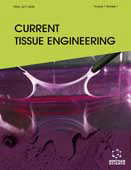Abstract
Background: Age-related macular degeneration (AMD) is a progressive degenerative disease of the macula and is the leading cause of visual impairment in the elderly population worldwide. The two advanced forms of AMD are geographic atrophy and choroidal neovascularization (CNV) which are the major causes of visual loss in AMD patients. Clinically effective therapy for CNV is now available but is limited by the need for repeated intravitreal injections of anti-angiogenic agents. There is still no effective treatment for geographic atrophy. Earlier concepts on AMD therapy were confined to local ocular therapies. However, recent evidences show that the complement system, inflammatory response and oxidative stress level are altered in the systemic circulation of AMD patients. Meanwhile, within regenerative medicine, stem cell therapy is effectively alleviating these systemic changes in multiple diseases. These findings have provided new insight into the pathophysiology and subsequent potential for clinical interventions in AMD.
Methods: This review article will first summarize the pathophysiology of AMD and then describe the systemic disorders associated with AMD. In addition, the characteristics of mesenchymal stem cells (MSCs) in regenerative medicine and its potential therapeutic effect for systemic disorders will also be discussed.
Results: AMD is an oxidative stress and inflammation-related disease affecting the RPE and photoreceptor cells of the macula. It is not only a localized eye disease, but also a disease affected by the systemic status of the patient. There is good evidence to show the influence of systemic factors in the pathogenesis, including complement system, inflammation, oxidative stress and angiogenic factors. Since MSCs possess the paracrine effects of anti-oxidation, anti-inflammation and immunomodulation, systemic administration of MSCs could theoretically alter the systemic influence on AMD progression. Currently, there are 3 MSC clinical trials on AMD, which locally apply bone marrow and adipose tissue-derived MSCs to supply neurotrophic factors to the microenvironment.
Conclusion: MSCs hold promises for treating the systemic conditions associated with AMD. The anti-inflammatory and anti-oxidative effects of MSCs are desirable and be developed as a potential therapeutic strategy against AMD for clinical treatment in the future.
Keywords: Age-related macular degeneration, complement system, inflammation, mesenchymal stem cells, oxidative stress.
 44
44

